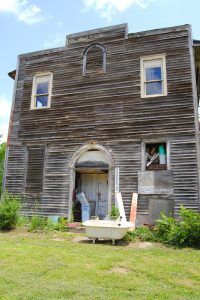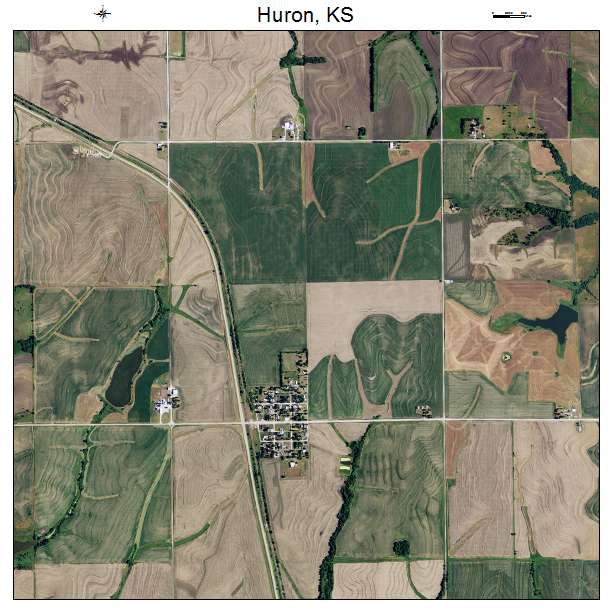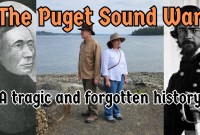
Where the Sidewalk Ends: The Quiet Endurance of Huron, Kansas
In the vast, undulating quilt of Kansas, where the horizon stretches into an endless promise and the wind whispers tales through fields of golden wheat, lie countless small towns. Some are bustling county seats, others are forgotten dots on aging maps. And then there are places like Huron, Kansas – a community that exists not as a relic, but as a living, breathing testament to resilience, a microcosm of the American heartland’s quiet endurance.
With a population hovering around 60 souls, Huron isn’t a place you stumble upon by accident. It’s a destination chosen, a home nurtured, a memory cherished. Tucked away in Atchison County, roughly an hour’s drive north of Kansas City, it lacks the grandiosity of metropolitan centers or the bustling tourism of historic towns. What it offers, instead, is something far more profound: a sense of belonging, a pace dictated by the seasons, and a community woven together by threads of shared history and mutual support.
To understand Huron today, one must first look back. Like countless small towns across the American heartland, Huron’s genesis was tied to the iron veins of progress – the railroad. Established in the late 19th century, it was a stop on the Chicago, Burlington and Quincy Railroad, a vital artery that connected agricultural bounty to distant markets. Farmers brought their grain, merchants set up shops, and families put down roots. At its peak in the early 20th century, Huron was a vibrant hub, boasting a general store, a blacksmith, a grain elevator, a school, and several churches. The air would have been thick with the scent of freshly turned earth, the clang of the hammer, and the rhythmic chug of passing trains.

"My great-grandparents settled here when the town was just starting," recalls Agnes Miller, 82, her voice carrying the gentle cadence of someone who has seen the world change from a steadfast vantage point. She sits on her porch swing, eyes scanning the quiet street, a panorama of neatly kept homes and sprawling yards. "It was a busy place then. Wagons lined the street on market days. Everyone knew everyone, and everyone helped each other. That much hasn’t changed, really."
Indeed, while the bustling main street of yesteryear has largely faded, the spirit of mutual aid and deep-seated community remains Huron’s most enduring feature. The general store is long gone, the school consolidated with a larger district years ago, and the trains no longer stop. What remains is a post office – often the last bastion of federal service in shrinking towns – a couple of churches, and a collection of homes that speak of generations of care. The silence, punctuated only by the chirping of cicadas or the distant rumble of farm machinery, is not empty but full; it’s the sound of peace, of a life lived deliberately.
The challenges faced by Huron are not unique. They mirror the struggles of thousands of rural communities across the United States. Economic shifts have favored larger agricultural operations, driving out smaller family farms. The allure of urban centers, with their promise of diverse job opportunities and modern amenities, has drawn away generations of young people. This phenomenon, often dubbed "brain drain," leaves behind an aging population and a shrinking tax base, making it increasingly difficult to maintain local services.
"It’s a familiar narrative," explains Dr. Eleanor Vance, a rural sociologist at the University of Kansas, who has studied demographic shifts in the state. "Small towns like Huron were built on specific economic models – agriculture and rail – that have fundamentally changed. When the jobs go, the people follow. What we see in places like Huron is the very last stage of that process, where the community is held together by sheer will and an incredibly strong social fabric, often at great personal cost to its residents."
Yet, to view Huron solely through the lens of statistics and decline is to miss its vital pulse. For those who choose to stay, or those who have returned, the town offers something invaluable that urban life often lacks. It’s the security of knowing your neighbors, the freedom of open spaces, and the deep satisfaction of a life intrinsically connected to the land.
Mark Jensen, 45, is one of those who returned. After two decades working in IT in Denver, he felt an undeniable pull back to the soil his family had farmed for a century. "The rat race just wore me down," he confesses, wiping grease from his hands in his farm workshop. "I missed the smell of the earth, the quiet nights, the feeling that you’re part of something bigger than just your cubicle. Here, everyone helps everyone. If a tractor breaks down, three neighbors show up before you even make the call. That’s not just convenience; that’s life."
This spirit of mutual reliance manifests in various ways. When a church needs a new roof, community members pool resources and volunteer their labor. During harsh Kansas winters, neighbors check on elderly residents, clearing driveways and delivering groceries. The post office, more than just a place to send mail, serves as an unofficial community bulletin board, a gossip hub, and a daily check-in point.
"Our postmistress probably knows more about what’s going on in Huron than anyone," chuckles Agnes Miller. "She knows who’s sick, who’s got a new grandchild, who needs a hand. It’s not just a job; it’s a service to the community."

The children who grow up in Huron often attend school in nearby Everest, a slightly larger town. While this means a daily bus ride, it also means that the sense of community extends beyond Huron’s precise borders. The sports teams, school plays, and local events in Everest become shared experiences for families from several surrounding small towns, knitting together a broader rural identity.
Huron’s quiet existence also offers a stark contrast to the relentless pace of modern life. There are no traffic jams, no towering billboards, no constant digital noise. The rhythm of life is set by the rising and setting of the sun, the planting and harvesting seasons, and the simple pleasures of rural living. On clear nights, the stars blaze with an intensity rarely seen in light-polluted cities, offering a celestial spectacle that inspires awe and reflection. The vastness of the prairie, often dismissed as "flyover country," here becomes a canvas for nature’s grandeur.
The future of Huron, like many small towns, remains an open question. Will the population continue its slow decline? Or will a new generation, perhaps seeking an escape from urban pressures, discover its quiet charm and potential? There are glimmers of hope: the occasional young family returning, the steady commitment of long-time residents, and the unwavering belief in the value of their way of life.
Huron, Kansas, is more than just a dot on a map; it is a living archive of American rural life. It embodies the enduring spirit of communities that refuse to vanish, even as the world around them changes at breakneck speed. It reminds us that true wealth is not always measured in economic output or population growth, but in the strength of human connection, the peace of wide-open spaces, and the quiet dignity of a life lived on one’s own terms. As the sun sets over the Kansas plains, casting long shadows across Huron’s homes, it illuminates not just a town, but an idea – the idea that even where the sidewalk ends, life, resilient and deeply rooted, finds a way to flourish.


